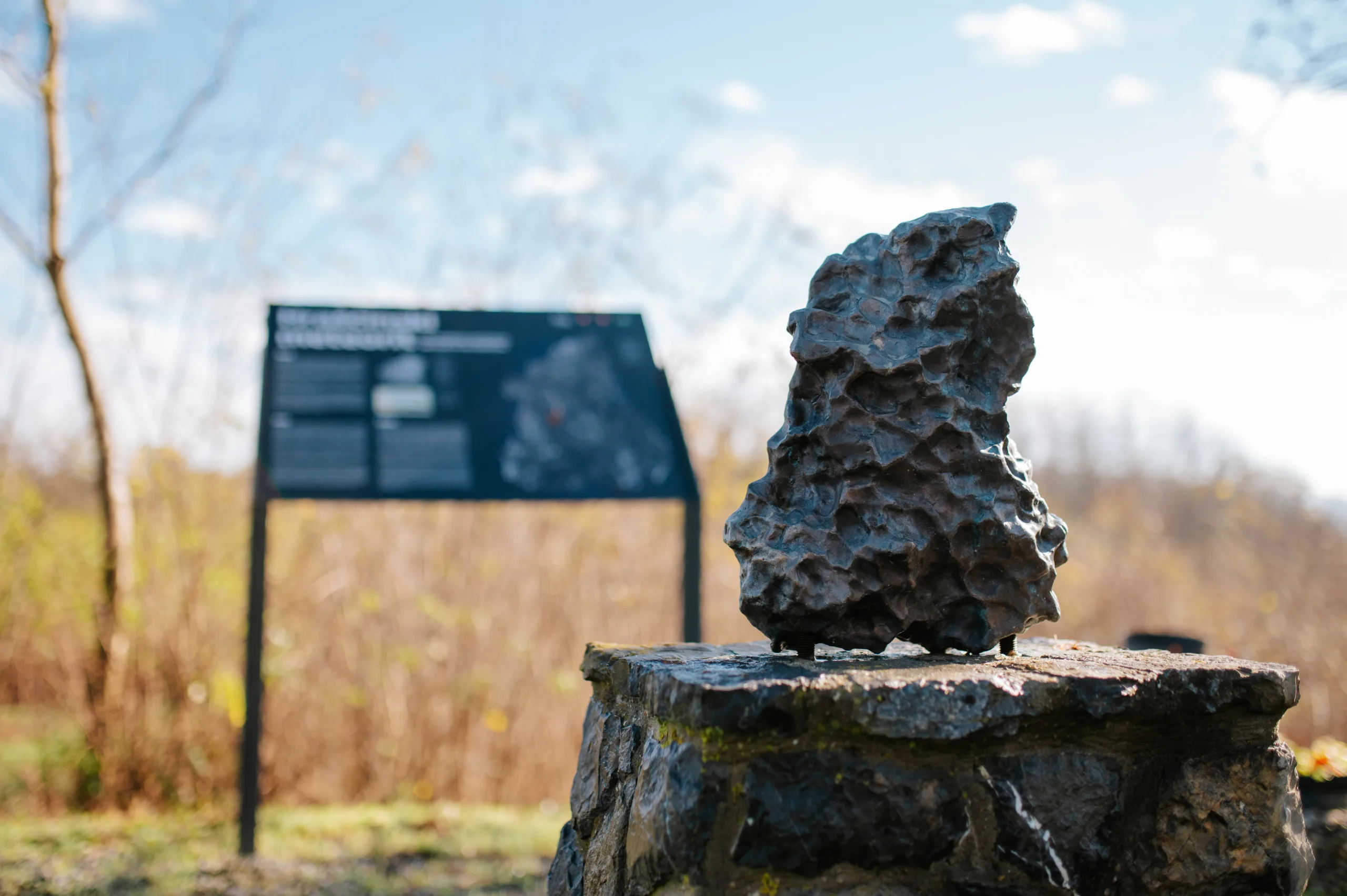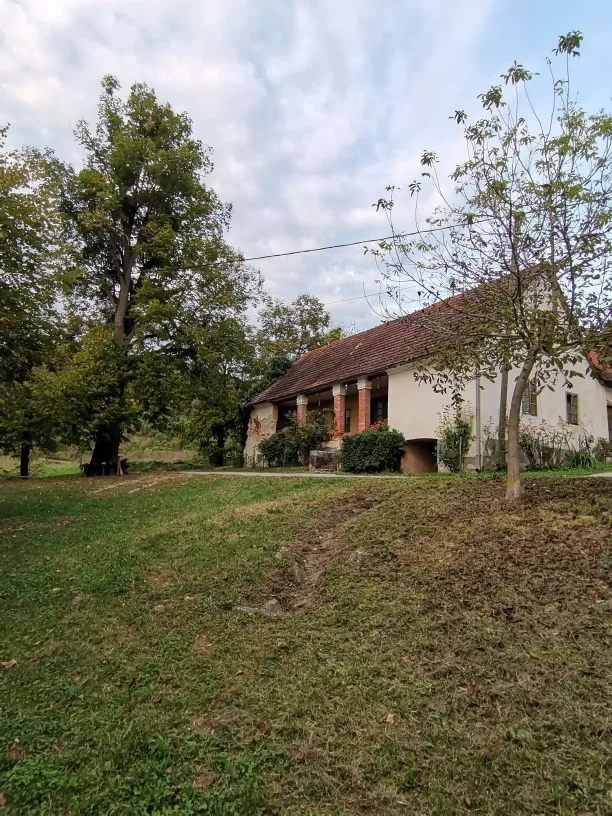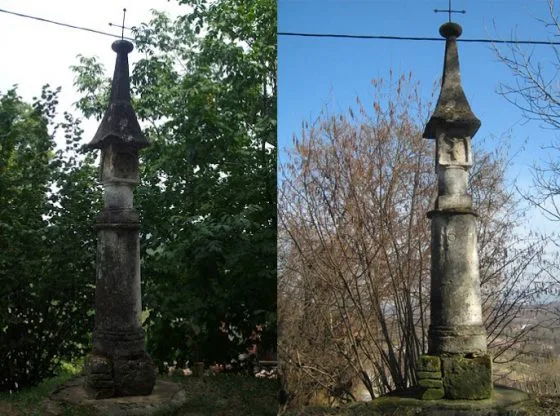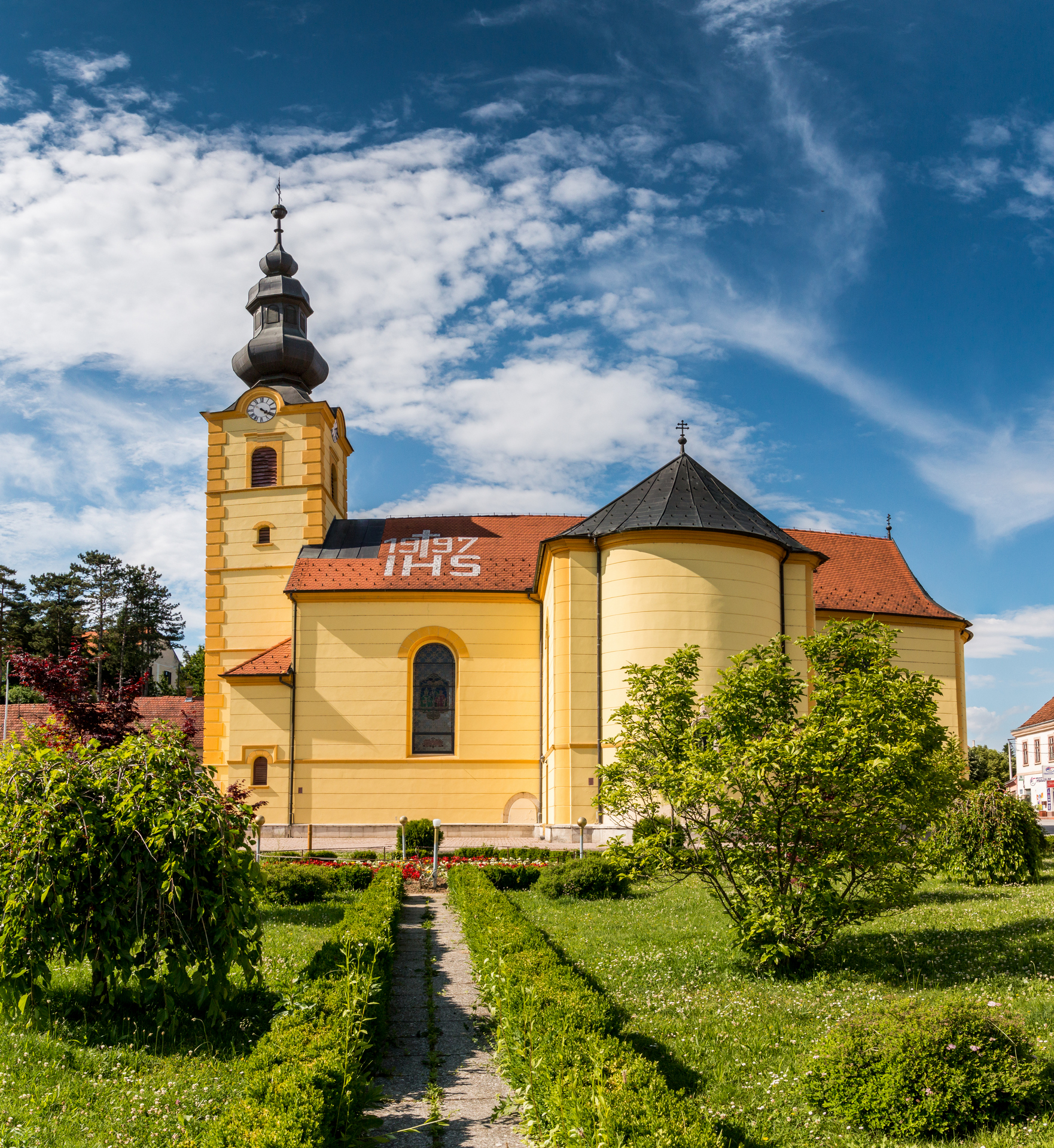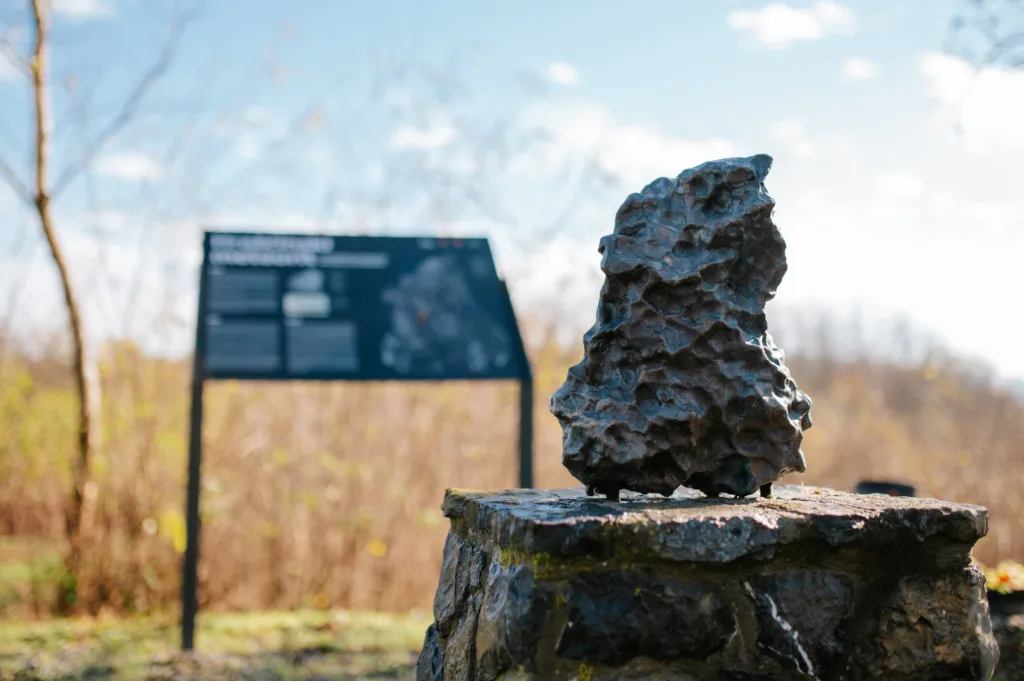

Memorial at the crash site
In the small hamlet of Kiternaši, in the village of Domovec, a memorial to the fall of the Hrašćina meteorite was decorated. In the quiet ambience of a small glade with a view of the picturesque hills that hide Hrašćina and numerous cultural and historical monuments and attractions, you can rest and read more detailed interesting facts about the world-important space traveler on the information board. The information panel is special and unique because, in addition to the pictorial part and text in Croatian and English, it also contains a translation into Esperanto. In the central part of the memorial is a low obelisk with a replica of the Rhašćina meteorite in natural size. The town can be reached by paved road following the features from the center of Trgovišće in the municipality of Hrašćina.
World-renowned event
26.5. 1751. in the afternoon, an unknown threat rushed over the Hrašćina region in the form of a huge light and with a rumble and thunderous bang frightened the inhabitants of the entire region.
A huge fireball frightened the serfs and threw them to the ground, and lifted those who were on vacation to their feet. The distraught people did not understand the nature of this phenomenon. He thought the angry dragon Pozoj had begun a killing spree to the end, breathing fire. The phenomenon was seen all the way from Hungary, Styria and Bavaria, and the explosion was heard as far as Varaždin. All who witnessed the incredible event realized that something had fallen from the air and, after being encouraged, rushed to look for the crash site. Among the first to do so was pastor Maršić. He sent two of his servants to investigate the event and bring what they found. It soon turned out that the event did not have a black and negative connotation, but that it was a bright signpost to the Christian name into the world and the development of science.
The fireball that rushed to the ground and burst into two parts that then fell on the arable land of Mia Koturnaš (Kiternaš) in Domovac caused a lot of fuss and the rumor of “falling stones from the sky” spread throughout the austrian empire of that time and attracted the attention of the imperial couple Maria Theresa and Francis Stephen I. The larger piece weighed 39.76 kg and was transferred entirely to the rectory, and according to the chronicler Krčelić, a smaller piece weighing 8.96 kg was distributed by the parish priest to the attendees, of which the Hrašćina blacksmiths forged nails. The fallen body, together with the record, which was compiled by the Vicar General of the Zagreb Diocese Vuk Kukuljević, and at the request of the Bishop of Zagreb, Franjo Ksaver Klobuziki, was sent to the imperial court.
Scientific roadmap
Francis Stephen I was a lover of natural history and at the time of this event he owned a natural history that has the longest history of all meteorite collections. The phenomenon of falling or rather catapulting, because at that time it was thought that the earth was throwing its parts into the air and they then fall back, by that time despite witnesses ended up on folk lore. For the first time in history, the event in Hrašćina was documented with a record and thoroughly described in Kukuljević’s document, and the subject of the fall itself interested the scientists of the time.
Almost half a century later at the Viennese court, the manager of imperial porcelain making was the minerologist Alois von Widmanstätten. Inspired by the event, he began research on a fallen body plaque. During special procedures, he noticed a crystallographic structure not seen on earth crystals. Widmanstätten’s discovery along with Kukuljević’s crash document proved the existence of a space body on earth, an iron meteorite. Initially called agramite (Agram is the old name for Zagreb, op.a), in the world the Hrašćina meteorite is also known as the popular name “Zagreb iron”, and Meteorite Hrascina is its official international name.
The meteorite has its own classification “identification map” on which, according to expert and scientific analysis, it is classified in the groups of iron meteorites of the chemical group IID, which is a group of rare meteorites. From the list of the group it is clear that only the Meteorite Hrašćina (1751) and the meteorite N’Kandhla (1912, South Africa) had witnesses to the fall, and the Meteorite Hrašćina is the oldest of the group.
The Hrašćina meteorite has made a tremendous contribution in the world in terms of the development of astronomy and meteoritics not only proving the existence of space bodies, but also in determining the age of the solar system.
Scattered around the world, forgotten in the home
The Meteorite of Hrašćina is kept as the first and most important specimen of the meteorite collection in the Historical and Natural History Museum in Vienna, and each piece is owned by world museums: Göttingen, Berlin, London, Chicago, Sarajevo, Harvard, Amherst, Tübingen, Paris, Calcutta, Washington, collection in the Vatican, private collection Horati (Montana) and the Natural History Museum in Zagreb, which has an exhibited replica.
Prolonging its importance and robbing it of oblivion every year in Hrašćina around the date of the fall of meteorites, the Esperanto Society Trixini organizes “Meteorite Days”, and the Club of Lovers of Native Heritage Hrašćina event “Hrašćinski astro”
ADDRESS
Domovec, Hrašćina
TELEPHONE
+385 (0) 49 459 391
EMAIL
bastina.hrascine@gmail.com

